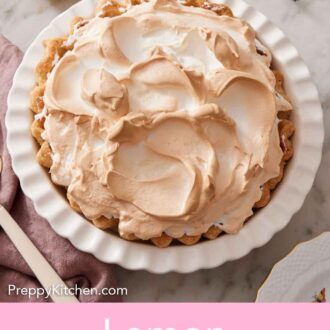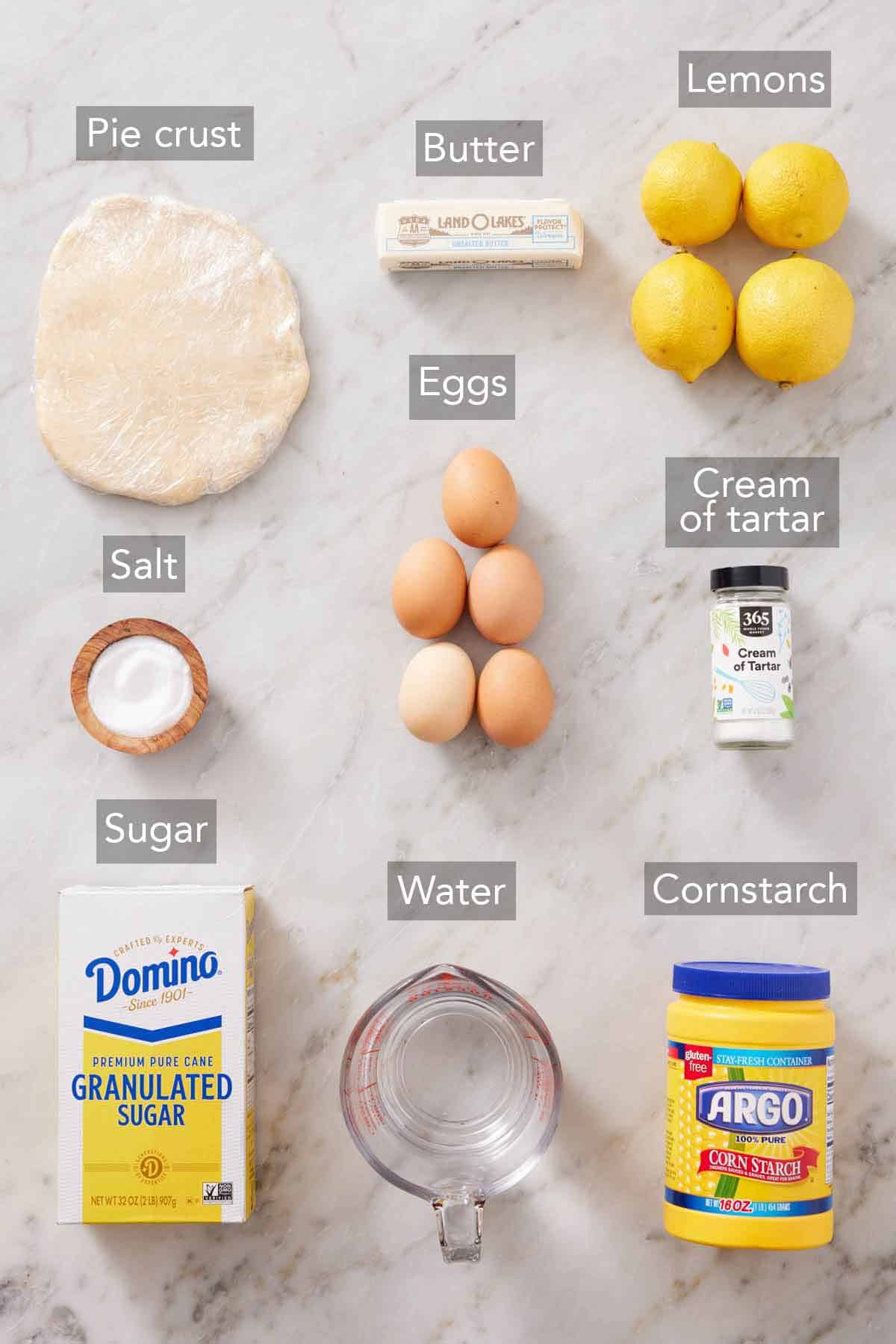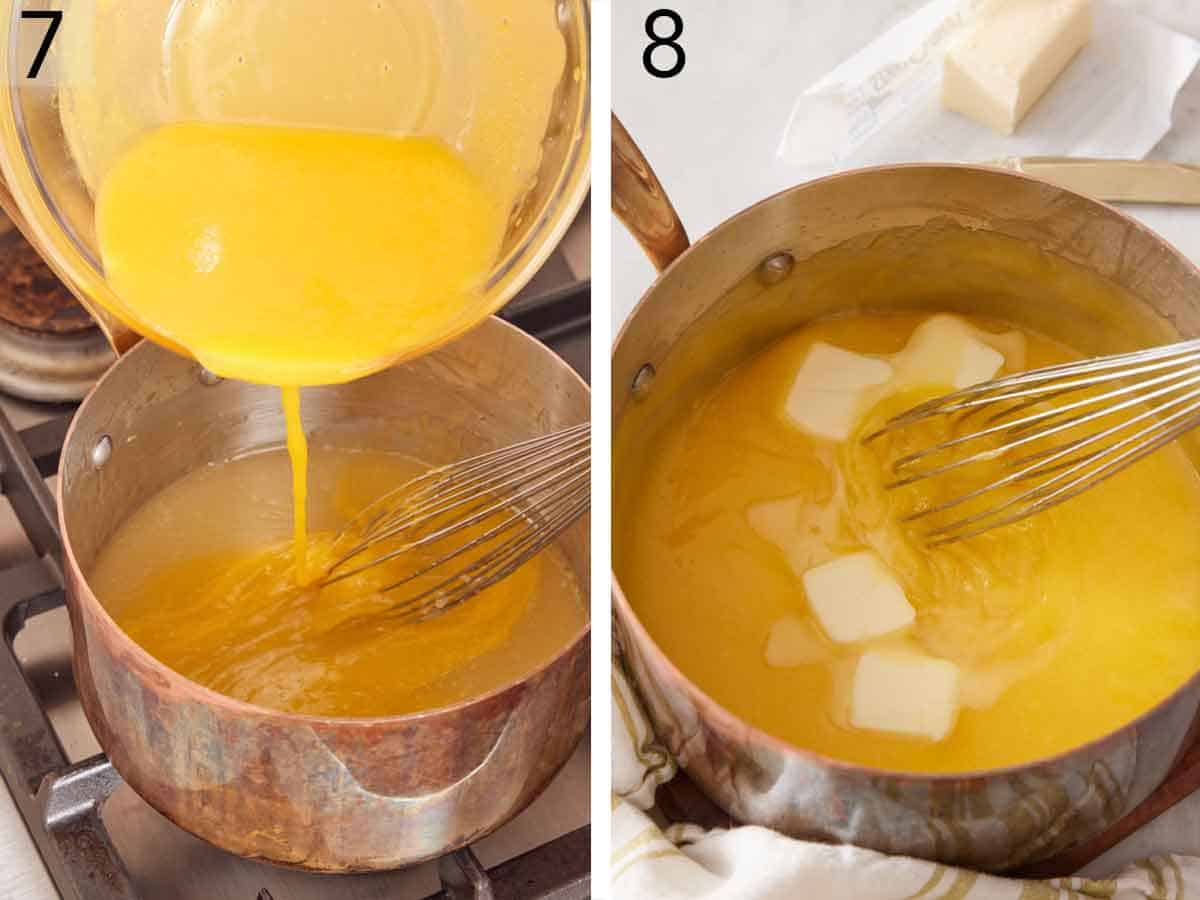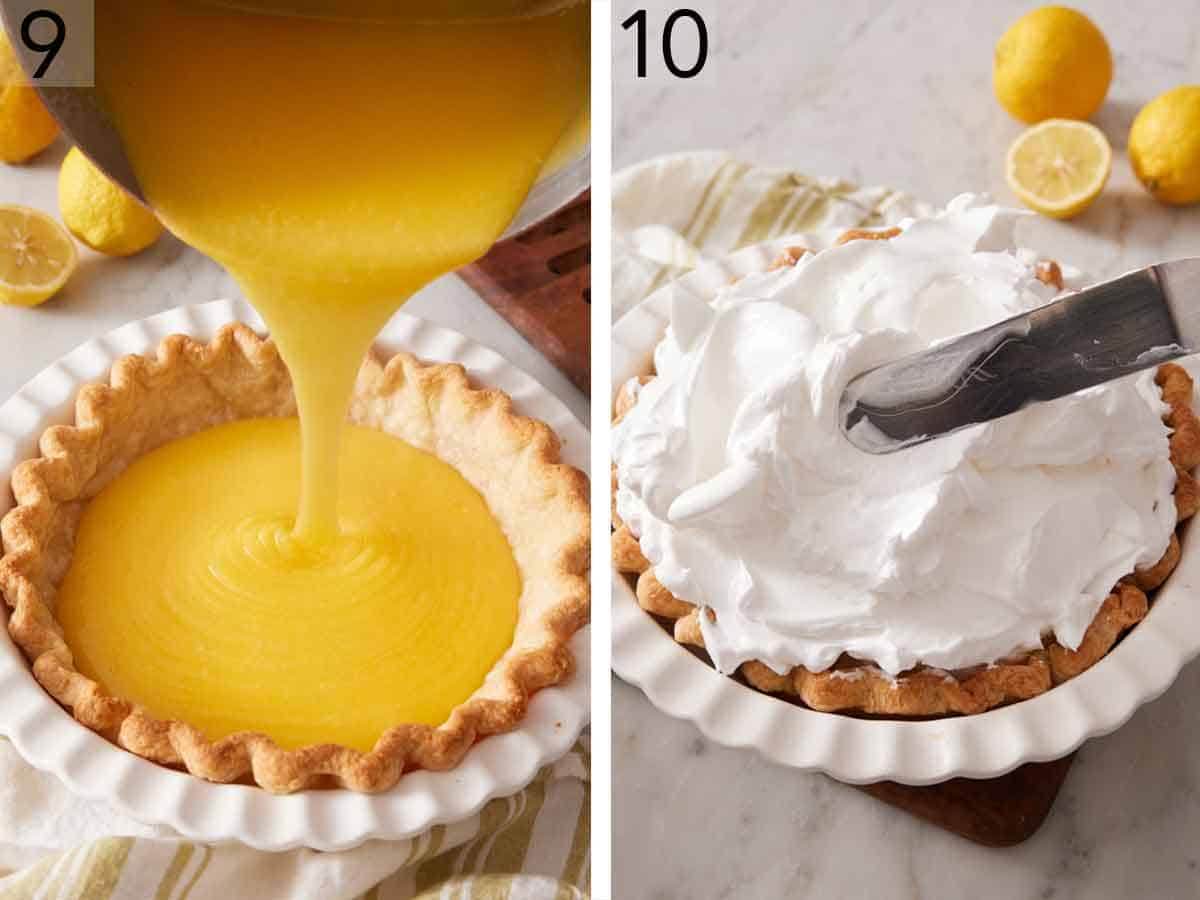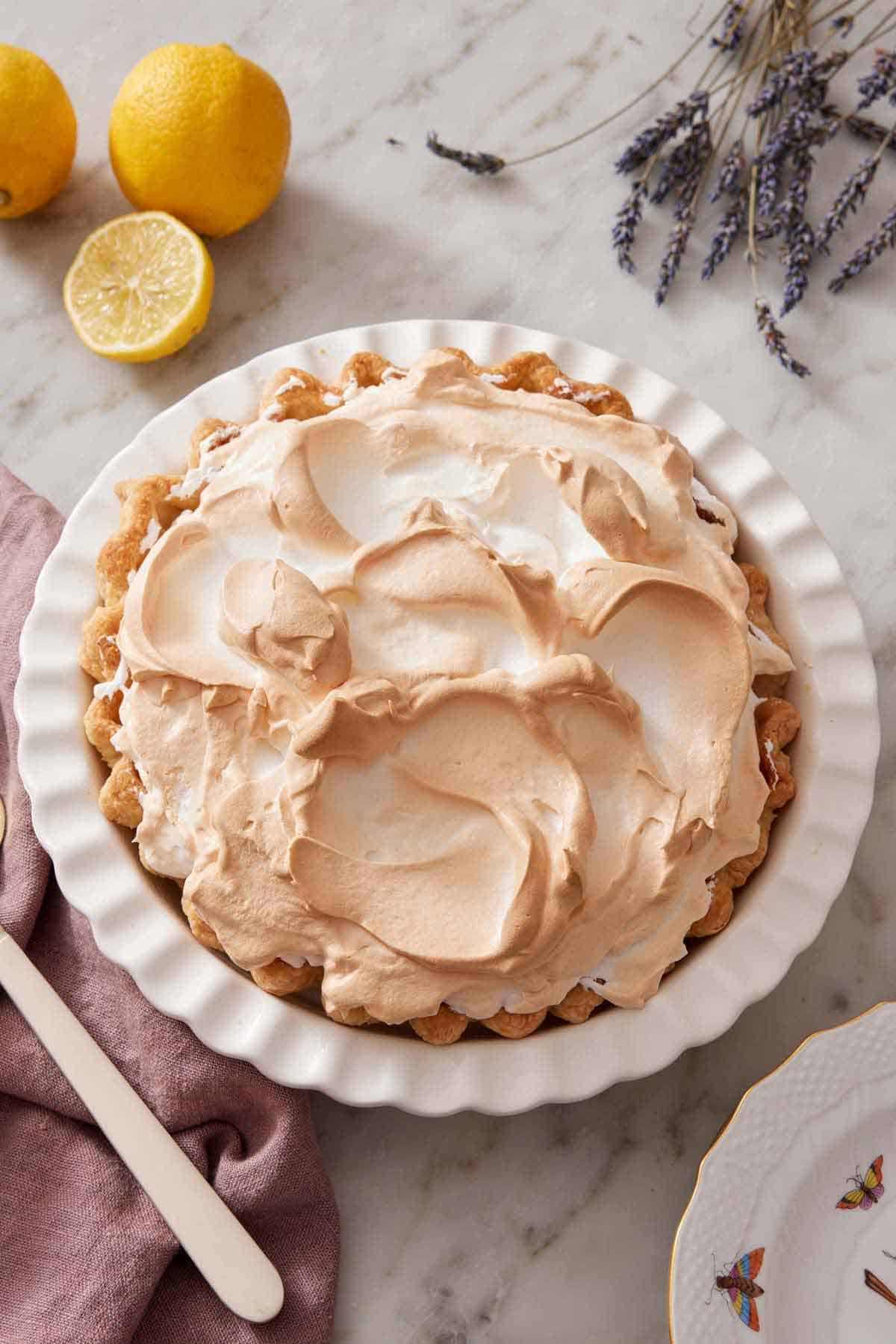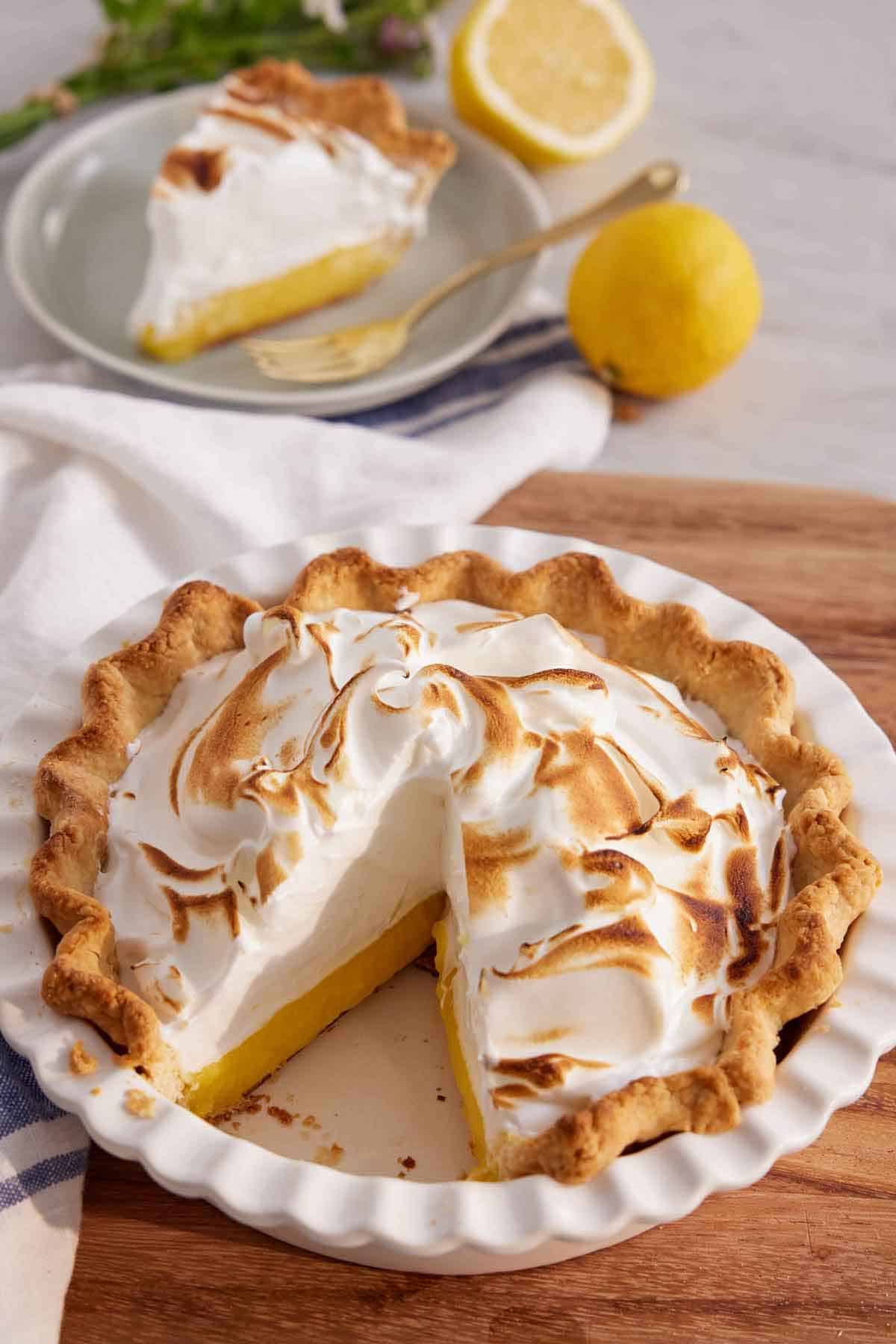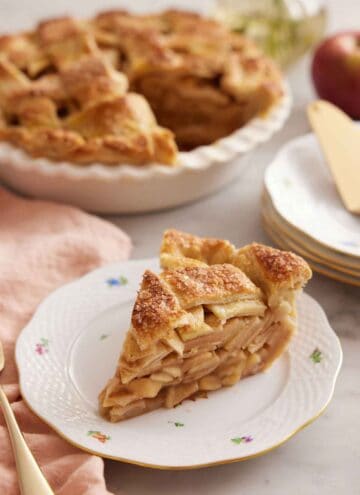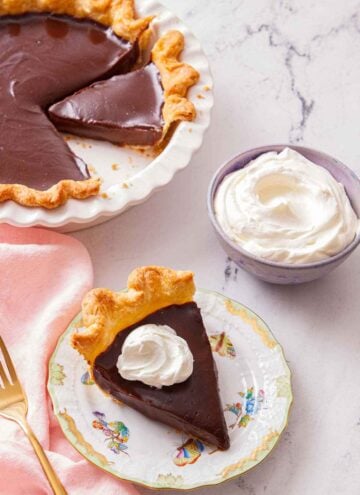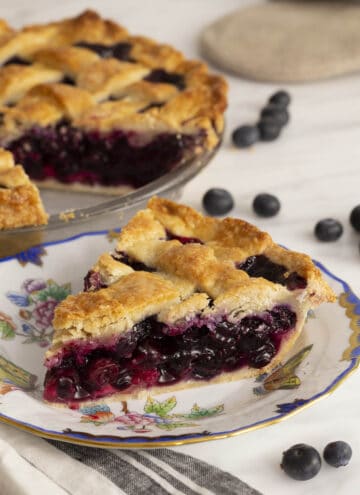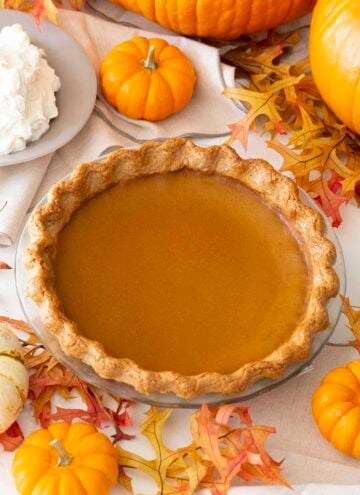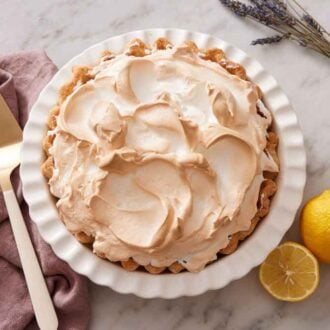The lemon curd is rich and custardy with refreshing and bold lemon flavor from freshly squeezed lemon juice and zippy lemon zest. Each layer is satisfying to make, and you’ll love seeing the meringue expand into a cloud-like fluff. For more desserts made with meringue, try my homemade baked Alaska, meringue cookies recipe, or Eton Mess recipe.
What You Need to Make This Recipe
Pie Crust – homemade or premade pie crust can be used. The lemon curd and meringue fit perfectly in a 9-inch pie crust, so double-check the size of your pie dish before adding your crust. Try my buttery pie crust recipe for a flaky and tender crust. Cornstarch – thickens the lemon curd layer to a silky smooth and velvety texture. For the smoothest curd, break up any clumps before you measure this ingredient. Lemon Juice – freshly squeezed lemon juice is a must for this recipe. The taste of fresh lemons is unparalleled and you’ll also need lemon zest, so skip the bottled juice! Granulated Sugar – classic white sugar adds sweetness to both layers and gives the meringue structure with a glossy finish. Eggs – separated. The yolks will be used for the lemon curd and whites will be whipped into the fluffy meringue. Use eggs at room temperature for the best meringue texture.
How to Make Lemon Meringue Pie
- Prebake your pie crust before starting your filling. If using a store-bought crust, prebake according to the package instructions. If using a homemade crust, roll the dough into a 12-inch circle. Place the dough in a 9-inch pie dish, tuck the excess pie dough under, and crimp the edges. Poke the bottom of the crust all over with a fork. Freeze for 20 minutes. Preheat the oven to 425°F while freezing. Line the frozen pie shell with aluminum foil and fill it with pie weights or dried beans. Place on a rimmed baking sheet. Bake for 20 minutes. Carefully remove the foil and pie weights and continue baking the crust until golden brown on the edges and the bottom appears dry, about 15 to 20 minutes more.
- Once your crust is baked, let it cool completely.
- In a medium bowl, whisk the egg yolks until smooth and set aside.
- In a medium saucepan, whisk together the sugar, cornstarch, and salt.
- Slowly whisk the water, lemon juice, and lemon zest into the sugar mixture until the cornstarch is dissolved. Place over medium heat and whisk frequently until thickened and starting to bubble, about 5 minutes. Remove from the heat.
- Temper the egg yolks by slowly pouring about 1 cup of the hot lemon mixture into the egg yolks while whisking.
- Slowly pour the tempered egg yolk mixture into the pot while whisking. Place over medium-high heat. Continue whisking until the mixture is thickened enough for the whisk to leave a defined trace and the mixture starts to bubble, about 2 minutes.
- Remove from the heat and whisk in the butter until fully melted and combined.
- Pour into the baked pie shell.
- Reduce the oven temperature to 350°F. While the filling is still hot, make the meringue. Combine the egg whites and cream of tartar in the mixing bowl of a stand mixer fitted with a whisk attachment. Beat on medium-high speed until frothy. Slowly add in the sugar. Continue beating until stiff, glossy peaks form, about 5 minutes. Spread the meringue over the top of the lemon filling, making sure it goes all the way to the edge and touches the crust. Bake for 15 to 20 minutes or until the meringue starts to turn golden brown.
Pro-Tips For Making This Recipe
Add color to the meringue with a kitchen torch. Torch the top of the meringue instead of baking it to add additional golden brown color and a toasted marshmallow flavor. Torching the meringue will also showcase the stunning wavy texture. Separate the eggs carefully. Meringue requires pure egg whites without any yolk. Carefully separate the eggs one at a time using a small bowl. If any egg yolks break while you separate them, set that yolk and white aside for another purpose. The smallest amount of yolk can hinder the meringue from expanding and rising. Spread the meringue all the way to the edges over the hot pie filling. The fluffy meringue layer should completely cover the lemon curd filling and be in contact with the pie shell. This will help the meringue to seal to the top of the pie and reduce the chance of the meringue weeping if the pie is stored. Slice the pie with a hot knife. The meringue will slice the most smoothly when cut with a hot knife. Dip your knife in a glass of hot water for a few seconds to warm the blade. Carefully wipe the blade clean and return to the water to warm it again between cuts.
If you’ve tried this Lemon Meringue Pie recipe, then don’t forget to rate the recipe and let me know how you got on in the comments below, I love hearing from you!
